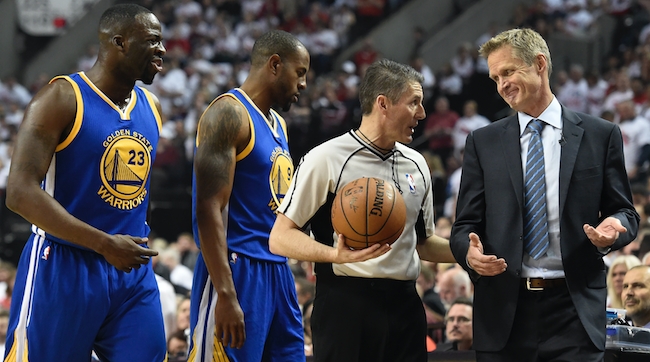
At the end of the 2015 season, the Golden State Warriors were sitting on top of the NBA after defeating the Cleveland Cavaliers in the NBA Finals. One huge reason for their postseason success was their lack of injuries during the playoffs. The Warriors’ health wasn’t an accident, it was by design that originated with help from big data to monitor the players’ fatigue levels.
While the Warriors didn’t exactly shy away from this methodical approach last season, it appears that Steve Kerr — with approval from award-winning GM Bob Myers — is going to look to rest players even more considering how his team performed in June’s NBA Finals as Steph Curry dealt with a knee injury.
An early hint from Bob Myers that the Warriors will rest guys plenty during the regular season, not sell out for wins pic.twitter.com/efLeJ2QYgU
— Anthony Slater (@anthonyVslater) September 23, 2016
This isn’t a Warriors-only trend. The Spurs have rested guys to keep them fresh for years, but over the course of the last three seasons, the number of times players who have received a DNP for rest has increased from 46 to 86 to 146, according to ESPN’s Tom Haberstroh. In a report provided to ESPN, Masaru Teramoto, assistant professor at the University of Utah School of Medicine, found that back-to-backs on the road are a leading cause of injury in the NBA.
Teramoto researched three seasons of NBA injury data, from 2012-13 through 2014-15, in an attempt to determine if certain aspects of the schedule — in particular, back-to-backs and travel — led to players getting injured in games.
What Teramoto found surprised him: Back-to-backs alone are not associated with greater instances of in-game injury, but back-to-backs that are played on the road are significant predictors of in-game injury, generating 3.5 times the injury rate as those played at home.
The problem? Two out of every three back-to-backs are on the road.
With this kind of information coming from research coupled with what teams are able to do on their own, we should expect the trend of DNPs for rest to continue not just in Golden State, but league wide.
(via ESPN)






